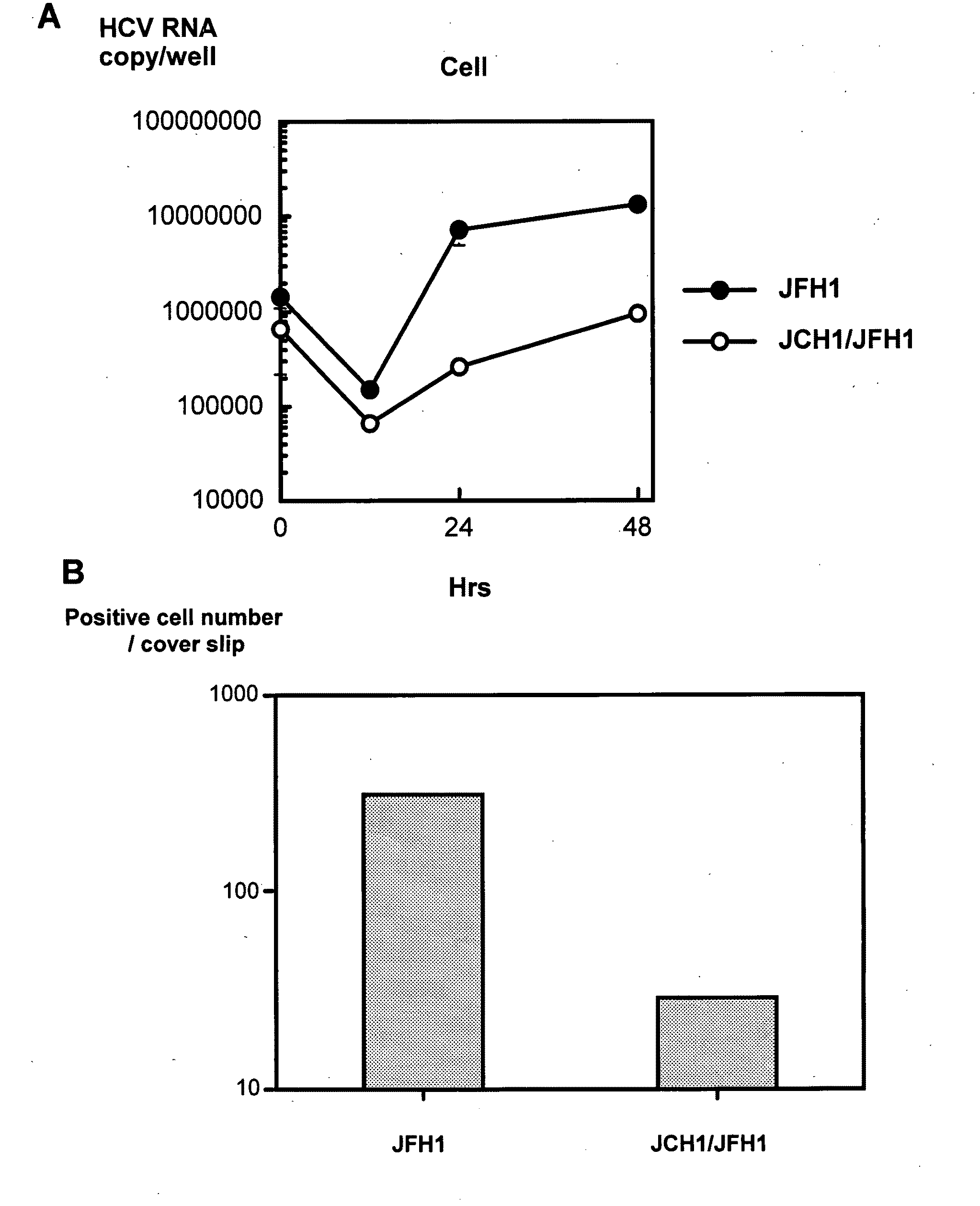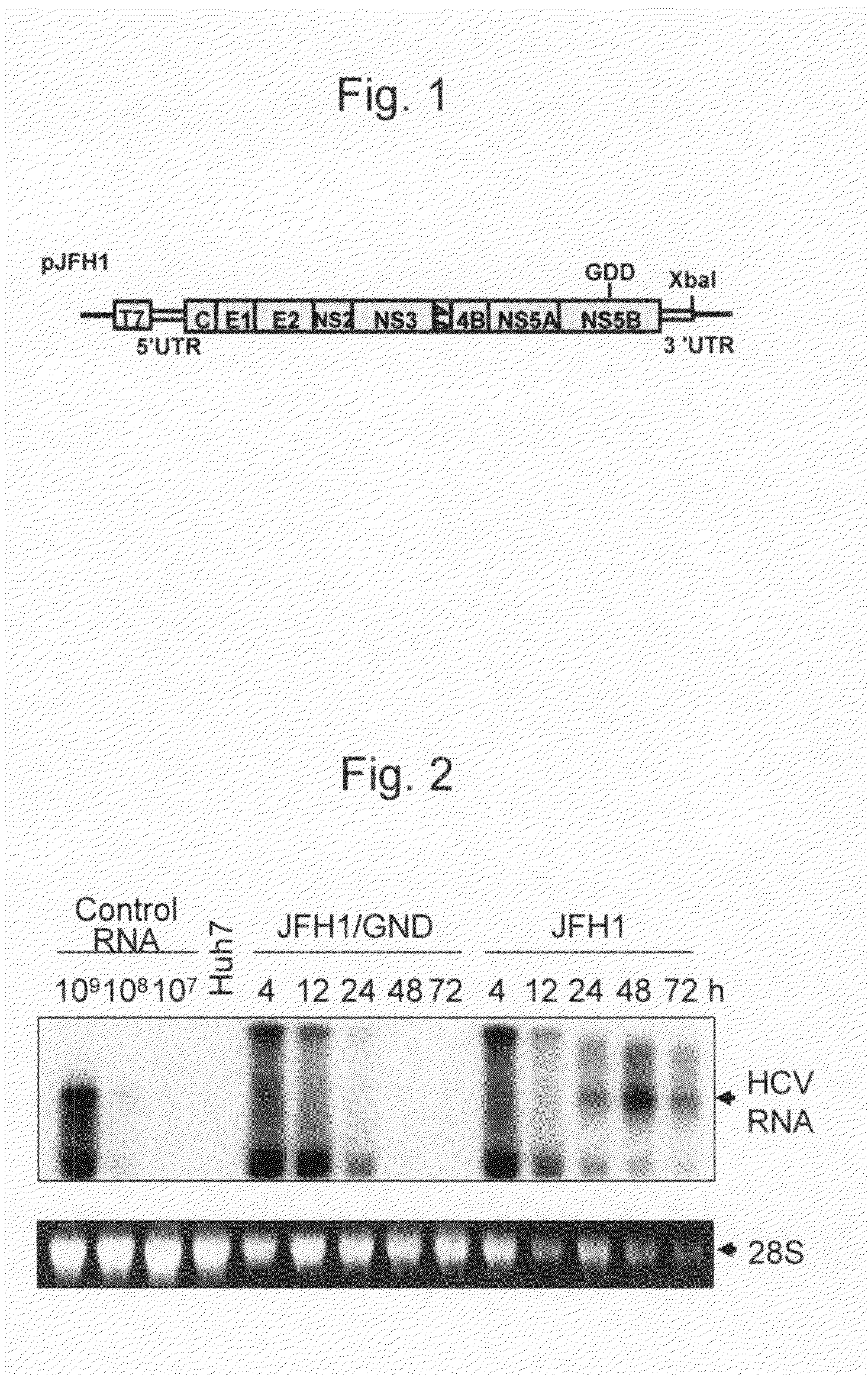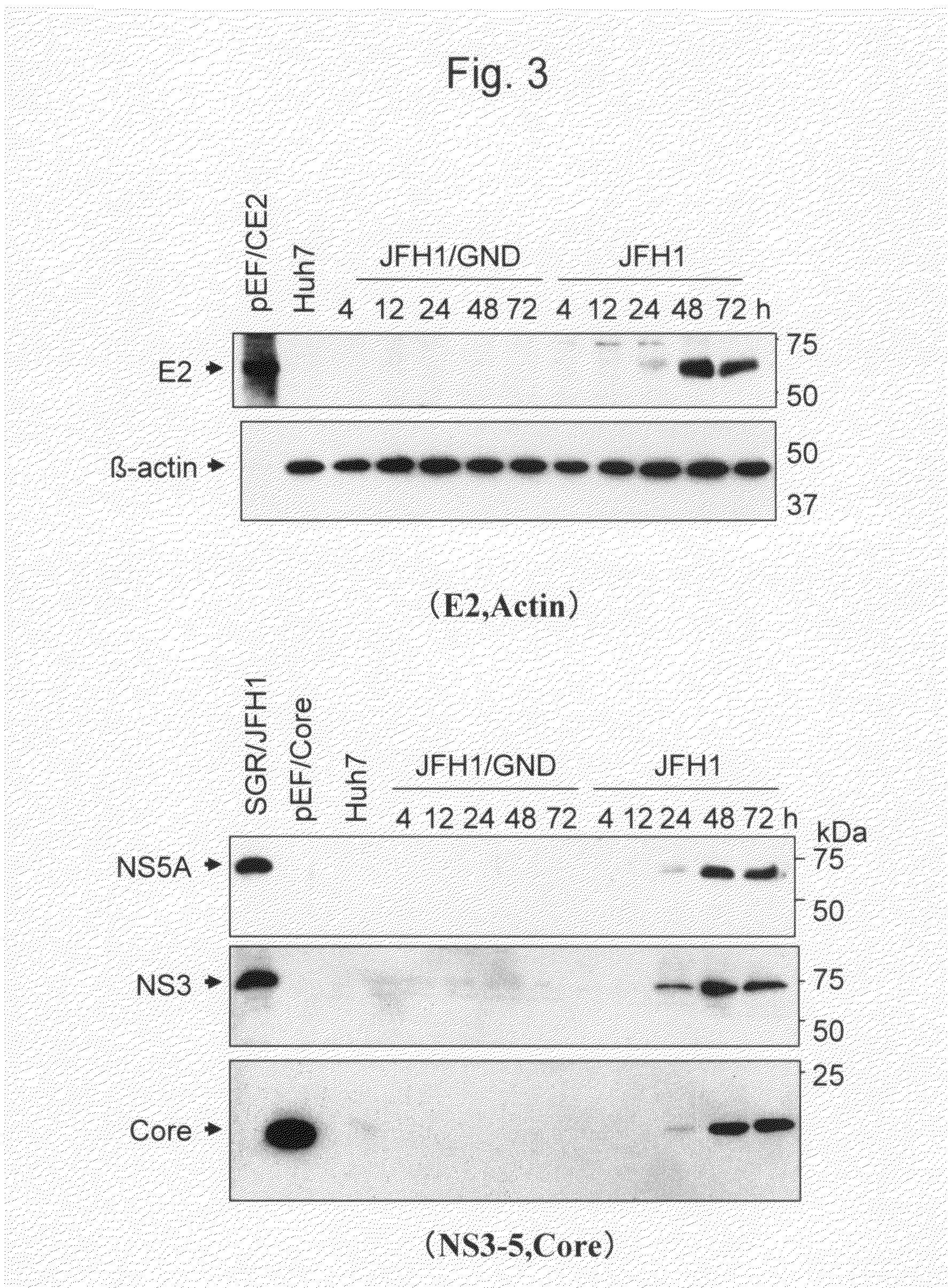Modified Human Hepatitis C Virus Genomic RNA That can be Autonomously Replicated
a technology genomic rna, which is applied in the field of autonomous replication of human hepatitis c virus, can solve the problems of fatal pathologic conditions, observed therapeutic effects, and extremely difficult to analyze differences in the therapeutic effects of developed hcv therapeutic agents, and achieve the effect of effective us
- Summary
- Abstract
- Description
- Claims
- Application Information
AI Technical Summary
Benefits of technology
Problems solved by technology
Method used
Image
Examples
example 1
Production of HCV Genomic RNA
1. Construction of Expression Vector
[0150]DNA corresponding to the total virus genomic region of a hepatitis C virus JFH1 strain (genotype 2a) isolated from patients suffering from fulminant hepatitis was obtained from a JFH1 clone comprising the full-length genomic cDNA of the above virus strain (Kato T. et al., J. Med. Virol. 64 (2001) pp. 334-339). The obtained DNA was then inserted downstream of a T7 RNA promoter sequence that had been inserted into a pUC19 plasmid. Specifically, an RT-PCR fragment obtained by amplification of the virus RNA of the JFH1 strain was cloned into a pGEM-T EASY vector (Promega), so as to obtain various plasmid DNA such as pGEM1-258, pGEM44-486, pGEM317-849, pGEM617-1323, pGEM1141-2367, pGEM2285-3509, pGEM3471-4665, pGEM4547-5970, pGEM5883-7003, pGEM6950-8035, pGEM7984-8892, pGEM8680-9283, pGEM9231-9634, and pGEM9594-9678 (Kato T. et al., Gastroenterology , 125 (2003) pp. 1808-1817). The virus genomic cDNA contained in each...
example 2
Generation of HCV Genomic RNA-Replicating Cells and Virus Particles in Cells
1. Replication of HCV Genome and Generation of Virus Particles in Cells
[0157]Each of the above-synthesized full-length HCV genomic RNA (rJFH1 and rJFH1 / GND) was adjusted such that the total RNA level became 10 μg. Subsequently, the mixed RNA was introduced into Huh7 cells by the electroporation method. The Huh7 cells treated by electroporation were inoculated into a culture dish, and they were then cultured for 12 hours, 24 hours, 48 hours, and 72 hours. Thereafter, the cells were recovered, and RNA was then extracted from the cells. The extracted RNA was analyzed by the Northern blot method. Such Northern blot analysis was carried out in accordance with Molecular Cloning, A laboratory Manual, 2nd edition, J. Sambrook, E. F. Fritsch, T. Maniatis, Cold Spring Harbor Laboratory Press (1989). The RNA extracted from the cells was subjected to denatured agarose electrophoresis. After completion of the electrophor...
example 3
1. Production of HCV Virus Particles Using Con1 / C-NS2 / JFH-1
[0176]Huh7 cells were transfected with chimeric HCV RNA comprising the NS5B portion of a Con-1 strain with HCV genotype 1b and that of JFH-1, and then, it was examined whether or not HCV particles are secreted into a culture solution, and whether or not the secreted HCV particles have infectivity.
[0177]The sequence of a Con-1 strain with HCV genotype 1b corresponding to 1 to 1,026 (the core, E1, E2, p7, and NS2 regions of the Con1 strain) was ligated downstream of the 5′-UTR of a JFH-1 strain. Thereafter, the 1,031-3,030 region of the JFH-1 strain (from NS3 to NS5b) was further ligated downstream thereof. Thereafter, the 3′-UTR of the JFH-1 strain was further ligated downstream thereof, so as to produce a construct. Using this construct, rCon1 / C-NS2 / JFH-1 chimeric HCV RNA was produced by the method described in Example 1-2 above. Thereafter, Huh7 cells were transfected with the above RNA by the method described in Example 2-...
PUM
| Property | Measurement | Unit |
|---|---|---|
| Density | aaaaa | aaaaa |
| Strain point | aaaaa | aaaaa |
Abstract
Description
Claims
Application Information
 Login to View More
Login to View More - R&D
- Intellectual Property
- Life Sciences
- Materials
- Tech Scout
- Unparalleled Data Quality
- Higher Quality Content
- 60% Fewer Hallucinations
Browse by: Latest US Patents, China's latest patents, Technical Efficacy Thesaurus, Application Domain, Technology Topic, Popular Technical Reports.
© 2025 PatSnap. All rights reserved.Legal|Privacy policy|Modern Slavery Act Transparency Statement|Sitemap|About US| Contact US: help@patsnap.com



